How to Be Happy and Healthy Like a Finn or Why I Fell in Love with Finland
From Miami to Lapland
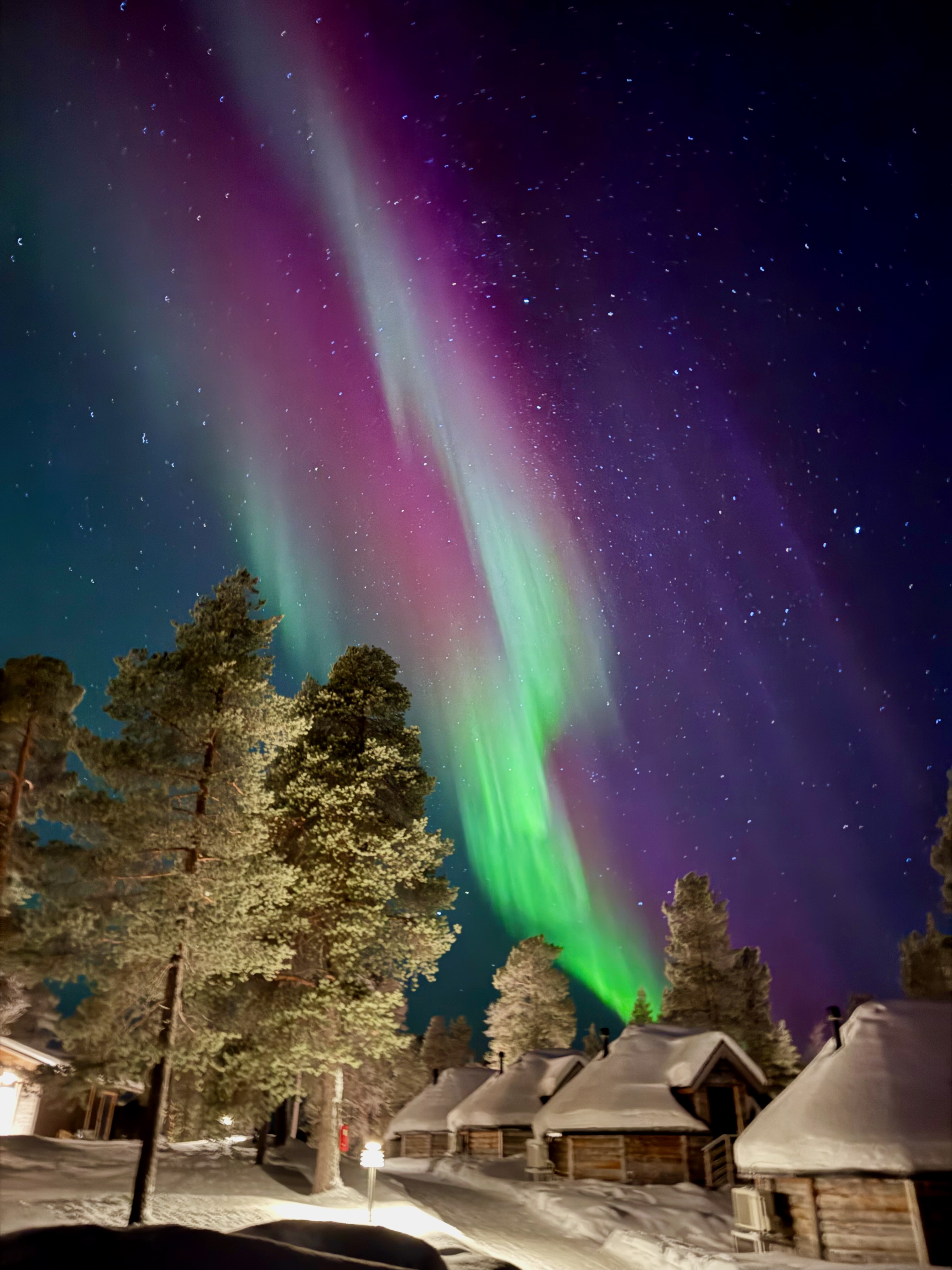
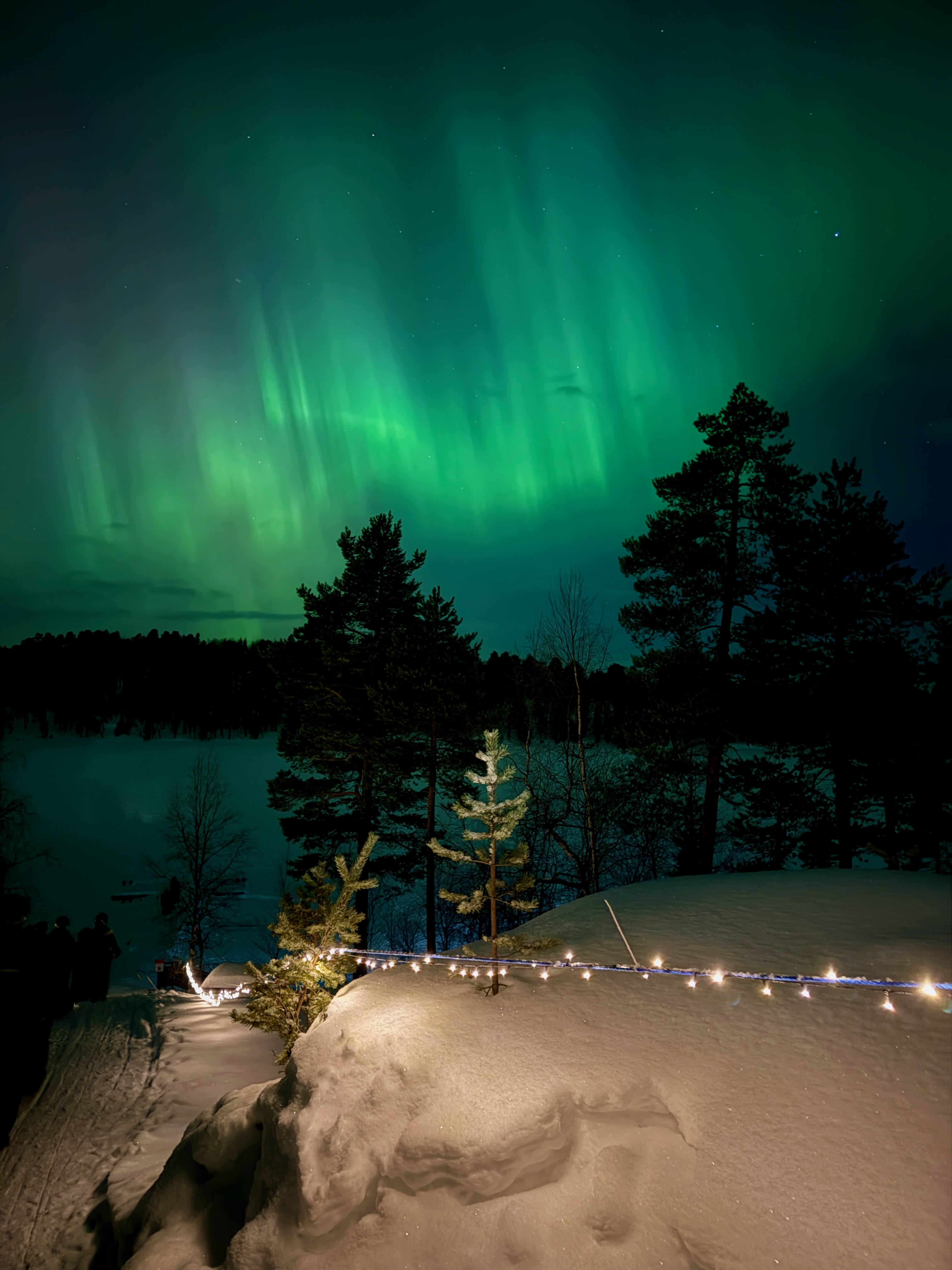
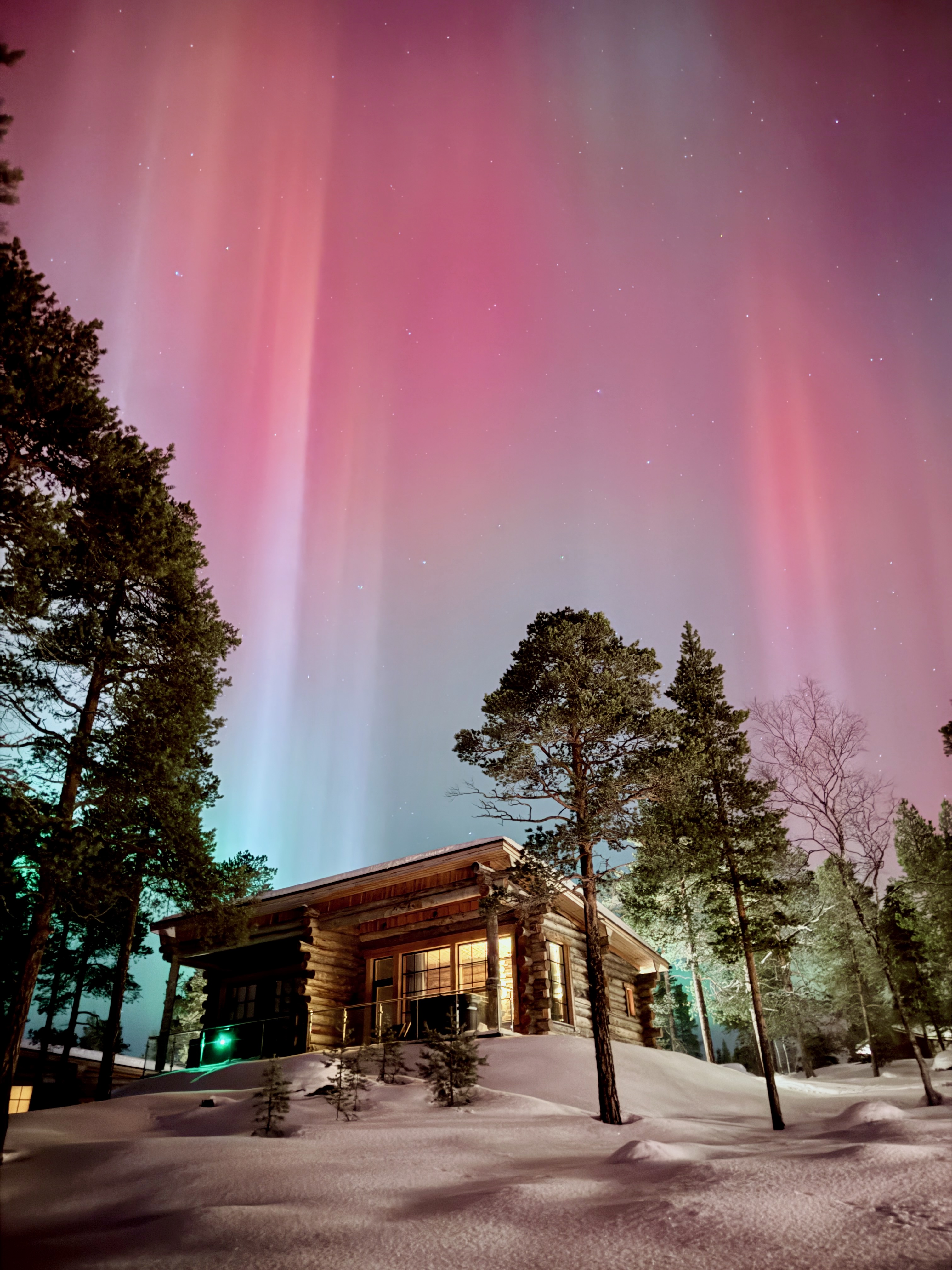
I’m Russian by birth, carry a dash of Finnish DNA, and currently live in Miami—a place defined by sunshine and year-round warmth. Naturally, deciding to spend a week in December at a Wilderness Hotel in Lapland, Finland felt like stepping onto a different planet, yet strangely, I felt an instant kinship with the land and its people, even though I was worlds away from the palm trees and humidity back home. Living in Miami often means being surrounded by a culture of fast living and easy pleasure—loud boat parties, aspirational consumerism, flashy cars, and bling real estate. Finland, by contrast, felt grounded—rooted in simplicity, functionality, patience, and quiet strength.
It’s not surprising that the region’s extreme climate has shaped the Nordic lifestyle. Finland’s climate is defined by long, dark winters and short, cool summers. In the northern regions—especially Lapland—the sun doesn’t rise in winter (polar night) and doesn’t set in summer (midnight sun).
This harsh, seasonal rhythm influences nearly every aspect of life in Finland—from how people eat and socialize to how they manage stress and find happiness. Food traditions reflect the need for sustenance and preservation through long winters, while sauna culture and cold-water plunges help build mental and physical resilience. The demanding environment has fostered a deep connection to nature and a cultural mindset of perseverance, or sisu. These adaptations, forged over generations, have not only helped Finns survive—but thrive—contributing to some of the highest levels of health and happiness in the world.
Food as a Reflection of Climate and Biology









Nordic cuisine reflects the need for nutrient-dense and calorie-rich food to survive harsh winters and short growing seasons:
1. Omega-3 from Fish: Salmon, herring, cod, and mackerel reduce inflammation, improve heart health, and enhance brain function.
2. Protein and Fat for Energy: Game meat (like reindeer and elk), pork, and lamb provide energy and maintain body heat.
3. Root Vegetables and Tubers: Potatoes, turnips, carrots, and beets thrive in cold soil and provide complex carbs for sustained energy.
4. Berries and Forest Foods: Lingonberries, cloudberries, blueberries, and wild mushrooms are rich in vitamin C and antioxidants. Berry picking is a cherished Finnish tradition, and homemade berry juices reflect a deep connection to nature.
5. Whole Grains and Rye: Rye bread (ruisleipä) is high in fiber, sustaining energy through slow digestion. Oats and barley are used in porridges and breads for warmth and satiety.
6. Fermented and Preserved Foods: Fermented dairy (like viili), pickled herring, and preserved meats enhance gut health and support immunity.
7. Coffee Culture: Finland has the highest coffee consumption in the world. Coffee represents warmth, connection, and a moment of calm. Coffee breaks (kahvitauko) are structured opportunities to relax and socialize, deeply ingrained in Finnish culture.
In the U.S. and much of Western Europe, sugary cereals and processed carbs are the norm at breakfast, fueling quick highs and crashes. Finnish breakfasts focus on slow-burning energy and nutrition. Swapping sweet pastries for a protein-packed savory treat might seem odd at first, but it leaves you feeling more balanced and energized.
Heat and Cold Therapy
Saunas are a core part of Finnish life, with over 3.3 million saunas—more than one per household. Used for over 2,000 years for bathing, healing, and social connection, saunas are seen as a “poor man’s pharmacy.” Health Benefits of Saunas include Cardiovascular health (Lowers blood pressure and reduces heart disease risk), Stress relief (Heat triggers endorphins and reduces cortisol), Detoxification – (Sweating flushes out toxins), Muscle recovery – (Increased blood flow aids muscle repair, Immunity boost (Sauna use increases white blood cell production).
We had a sauna inside our room and used it every day after long outdoor activities in the December cold. It was the perfect way to warm up and relax. Outside, on our terrace, we also had a jacuzzi (once catching an aurora from there). Interestingly, despite being wet and exposed to freezing temperatures, we never got sick. Key to avoiding getting sick is drying off quickly afterward, wearing warm clothing, and not staying too long in cold, wet conditions.
The Finnish tradition of alternating between hot saunas and ice-cold plunges is known as contrast therapy, which leverages the body’s stress response to improve circulation, boost mood, and enhance mental resilience:
- Cold shock – Plunging into freezing water after a sauna triggers endorphins and strengthens the nervous system.
- Calm alertness – The body’s response to temperature extremes creates a sense of calm and mental clarity.
- Improved circulation – Blood vessels constrict in cold water and expand in heat, improving blood flow and oxygen delivery to tissues.
- Boosted metabolism – Exposure to cold activates brown fat, which burns calories to generate heat, supporting weight management.
In Finland, contrast therapy isn’t limited to saunas and cold plunges—it’s part of everyday life. Winter swimming (or “avantouinti”) is popular even among the elderly, and many Finns take cold showers or walk barefoot in the snow after a sauna. The consistent exposure to temperature extremes strengthens the immune system and increases the body’s ability to handle stress. This “hormetic stress” boosts circulation, enhances mental resilience, and reinforces the Finnish sisu mindset—calm endurance in the face of discomfort.
Connection to Nature and Outdoor Life
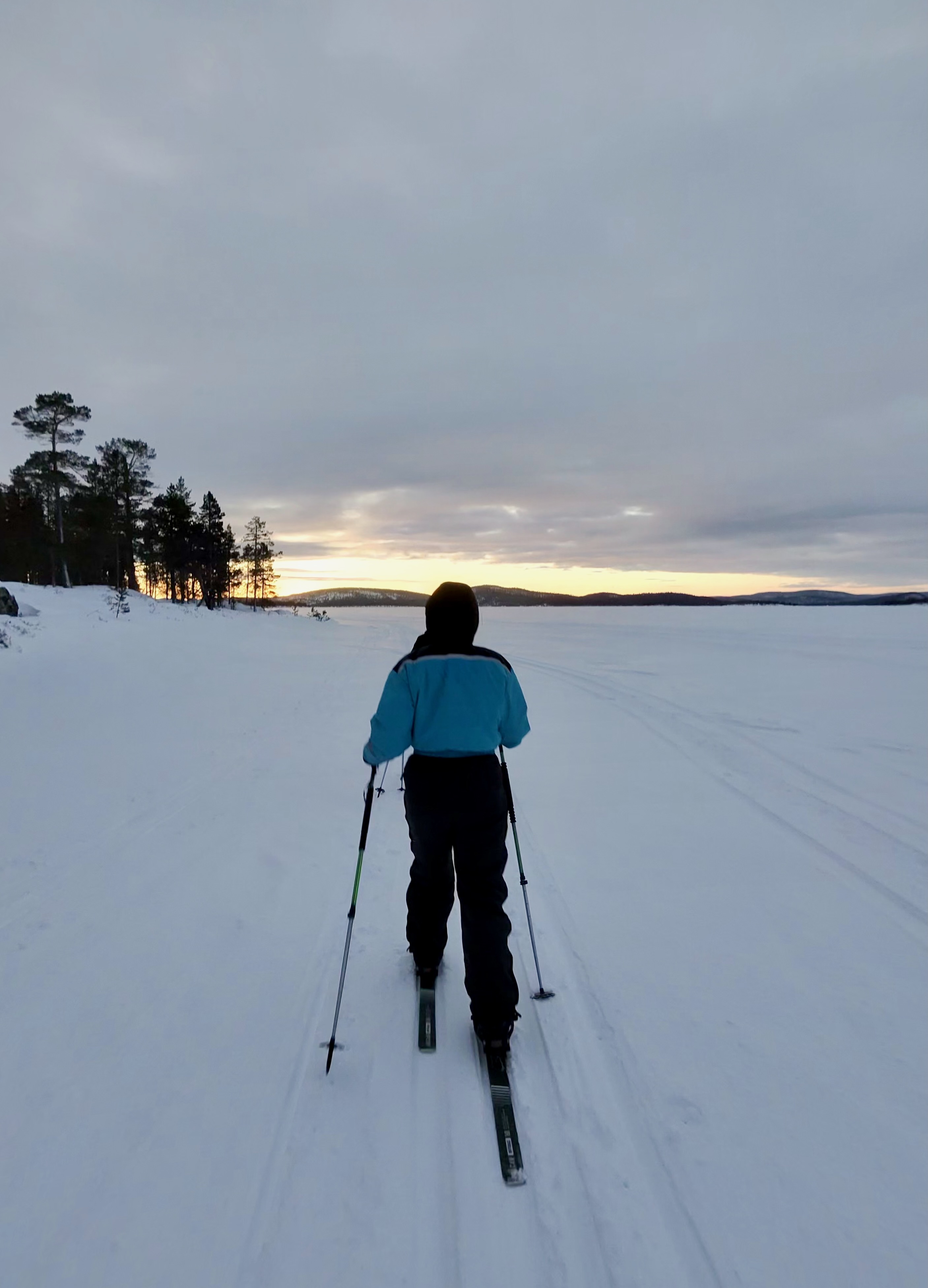
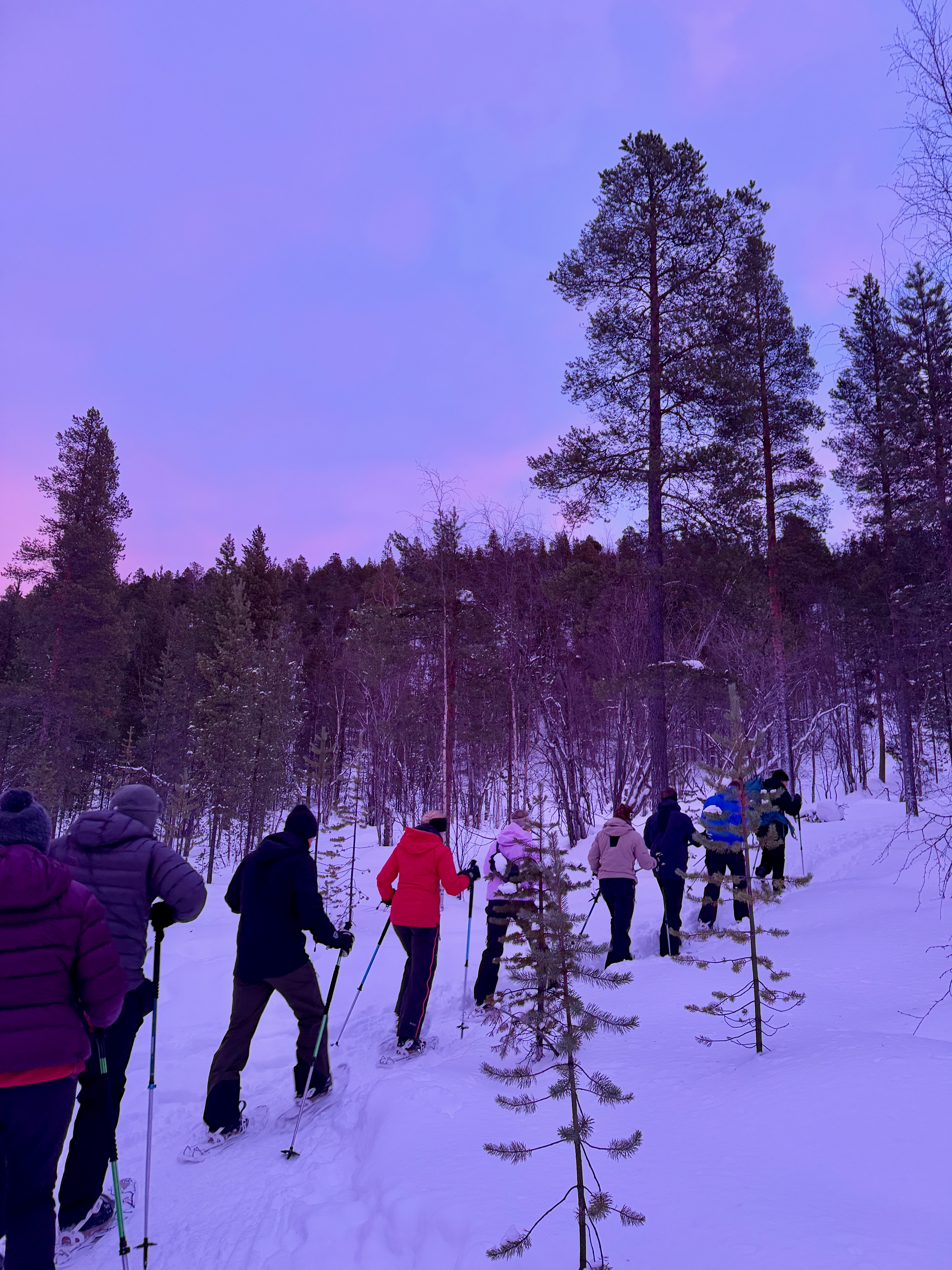
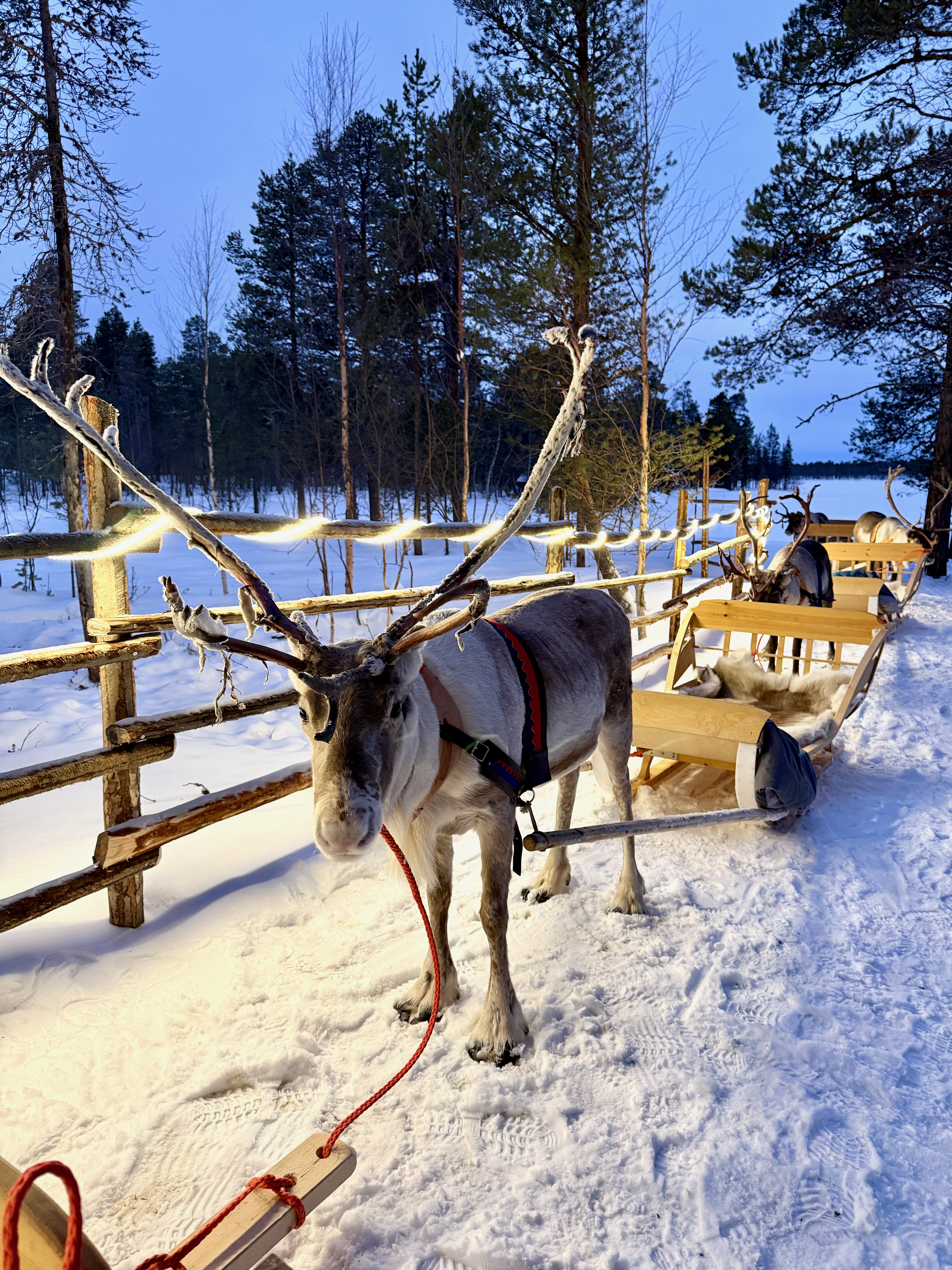
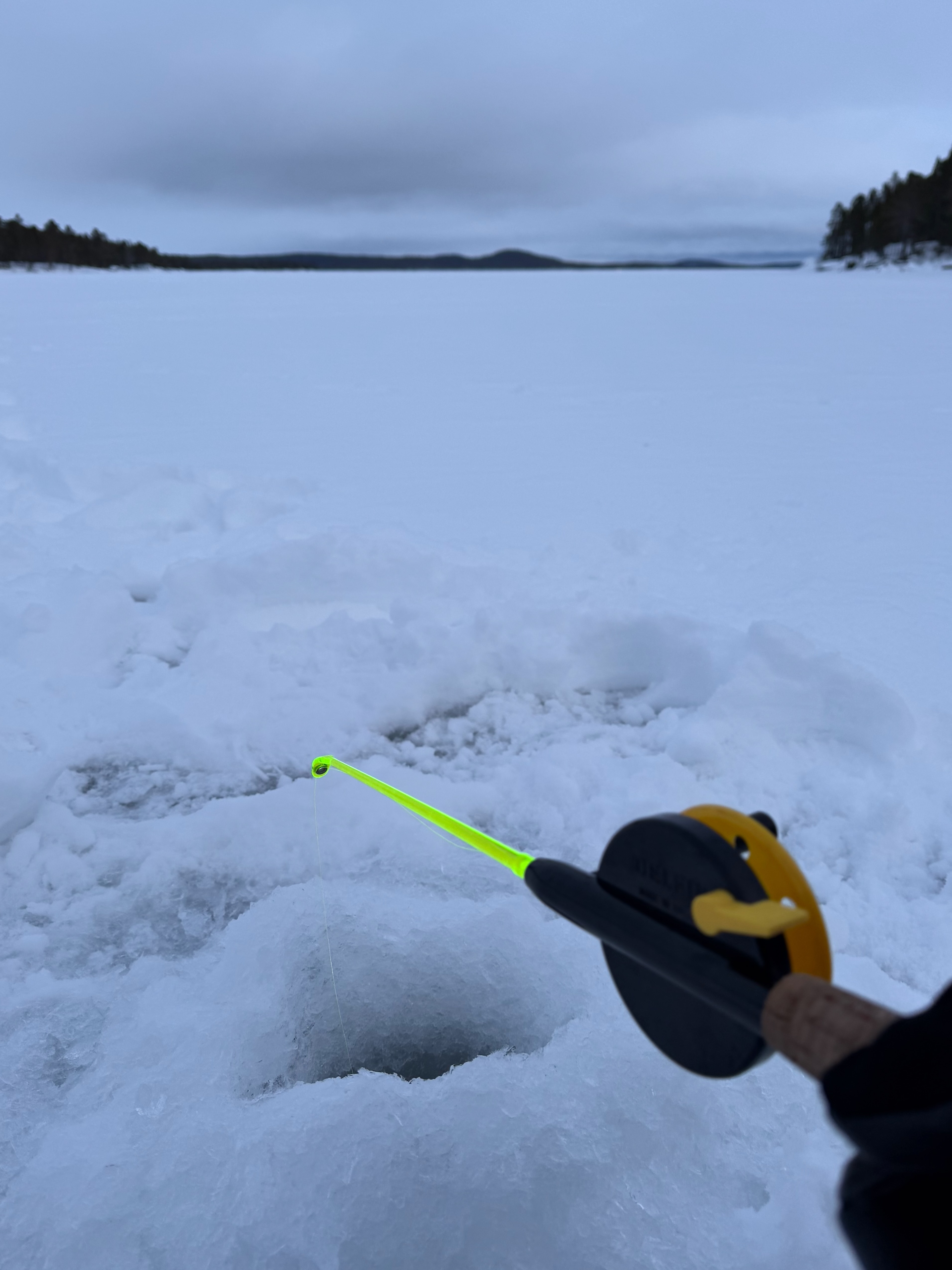
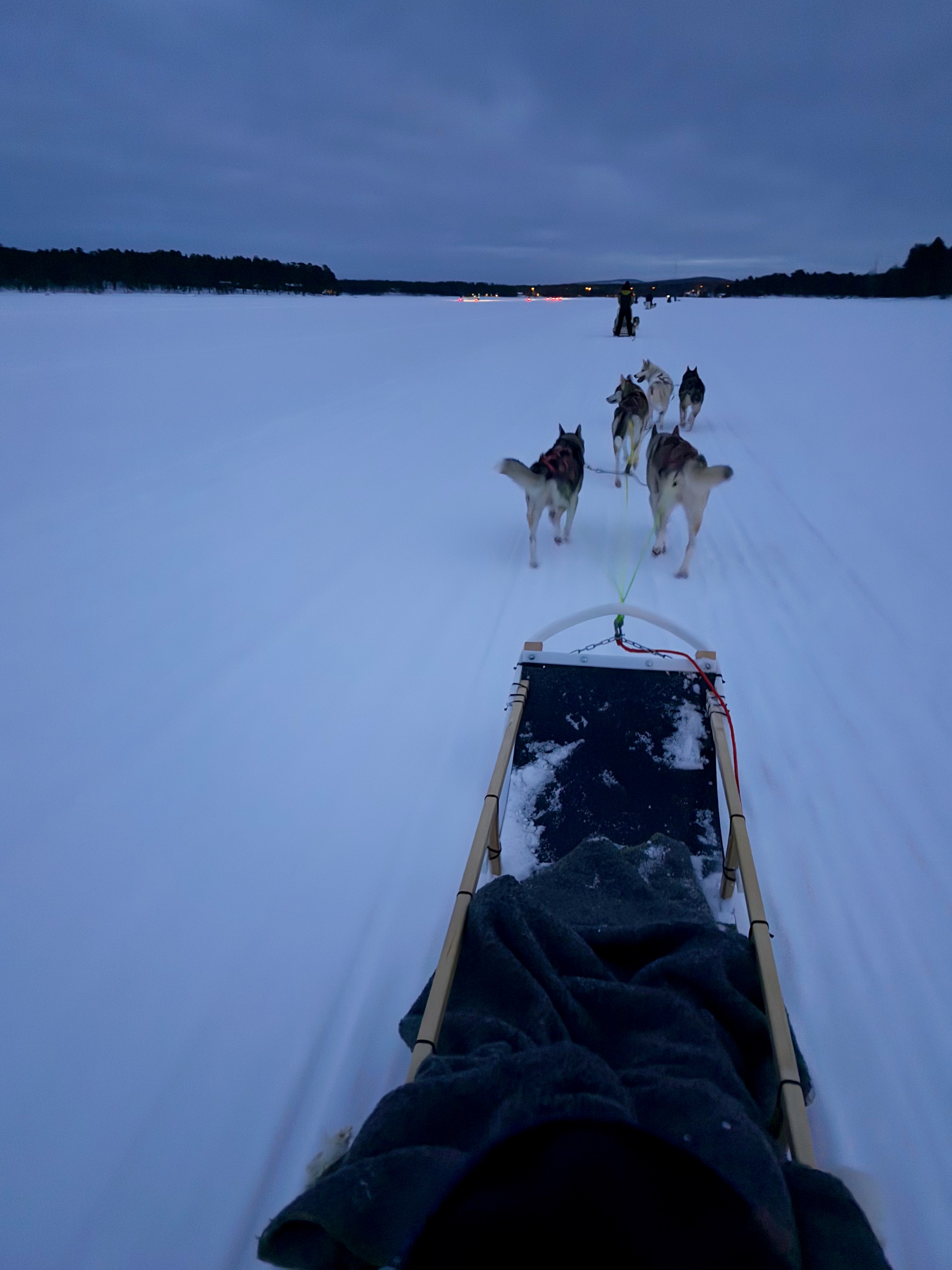
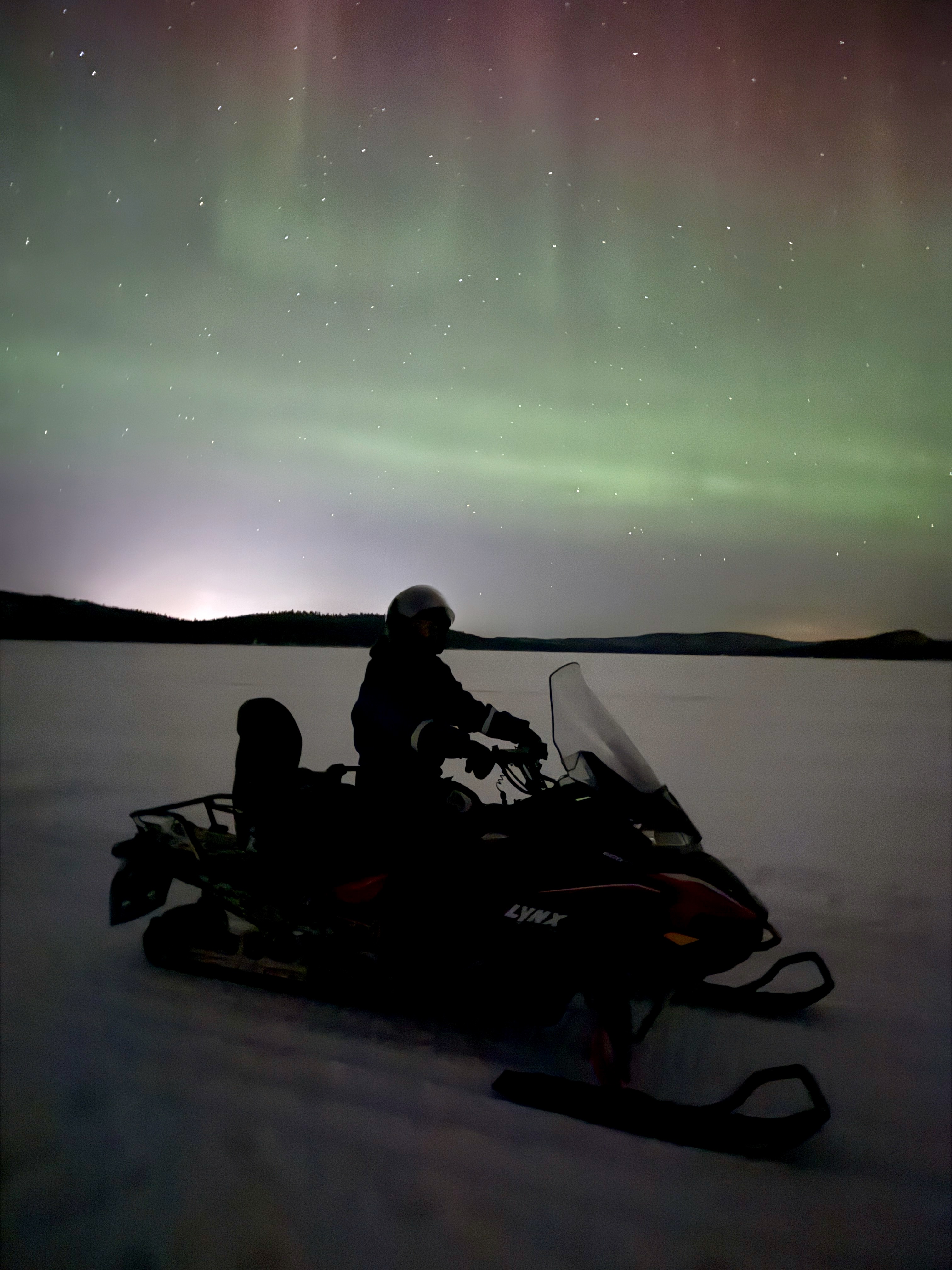
Finns have a uniquely close bond with nature that goes beyond weekend getaways. “Everyman’s Right” allows people to roam freely across much of the countryside, picking berries or mushrooms, as long as they respect the land. Folklore and mythology—rich with tales of forests, lakes, and spirits—have cultivated a deep respect for the environment. For many, nature is a place of solace that fosters self-reliance and reflection, especially during winter’s long indoor stretches.
Instead of dreading winter, Finns embrace it with outdoor activities. During our stay, we fully embraced this by going on an Ice Fishing Trip by Snowmobile Sleigh, a Snowshoeing Adventure through pristine snow-covered forests, exhilarating Husky and Reindeer rides, Cross-Country Skiing across frozen landscapes, and high-speed Snowmobile Adventures. Despite the extreme cold, being active outdoors felt mostly invigorating. “There’s no such thing as bad weather, only bad clothing” is a common Finnish saying. Dressing appropriately and staying active outdoors helps maintain mental and physical well-being, reinforcing the Finnish mentality of adapting to and thriving in harsh conditions.
Mentality and Cultural Mindset
Finns have adapted to extreme light and dark cycles with resilience, patience, and adaptability. Long winters demand endurance and careful planning, fostering a calm, pragmatic approach to challenges—often called northern grit or sisu—a distinctly Finnish concept of perseverance and inner strength.
- Endurance and Stoicism – Long winters built mental toughness and a no-drama, practical mindset rooted in sisu.
- Patience and Acceptance – The Polar Night instills patience and appreciation for slow, introspective activities.
- Seasonal Adaptability – Winters encourage rest and reflection; summers bring intense outdoor activity and productivity.
- Self-Sufficiency – Historically, families had to stockpile food and resources, reinforcing personal responsibility and preparedness.
- Simplicity and Quality – A focus on functionality and quality reflects the value of durability over excess.
- Creativity and Storytelling – Long winters have inspired a rich tradition of art, music, and folklore, reflecting deep ties to nature.
- Embracing Darkness – Concepts like hygge (Danish) and koselig (Norwegian) emphasize creating warmth and comfort during the dark months through good food, cozy lighting, and close social bonds.
Why Finns Are Among the Healthiest and Happiest People
Finland’s consistently high rankings in global happiness reports can seem paradoxical: how does a place with such dark, cold winters become home to some of the happiest and healthiest people on Earth? Finland also ranks among the healthiest nations globally, with high life expectancy (around 81–84 years), low obesity rates, and lower rates of heart disease and mental health disorders than many Western countries.
- Physical and Mental Resilience – The combination of heat and cold exposure, along with an active outdoor lifestyle and regular physical activity, strengthen both body and mind.
- Nutrient-Dense Diet – Traditional Nordic foods—rich in Omega-3s, whole grains, and fermented products—support heart health, mental clarity, and longevity.
- Embracing Seasonal Rhythms – Finns align their lives with nature’s cycles, balancing intense activity in summer with rest and introspection in winter.
- Sisu Mindset – The ability to persevere through adversity and remain calm under pressure is deeply ingrained in Finnish culture, reinforcing emotional strength and life satisfaction.
- Social Trust and Support – Finland has high levels of social trust and a strong sense of community. Sauna culture, coffee breaks, and communal outdoor activities foster genuine connection and emotional support.
This combination of social connection, mental toughness, and physical well-being creates a foundation for long-term health and happiness—proof that living in harmony with nature, rather than resisting it, leads to a more balanced and fulfilling life.
#finland, #lapland, #sauna, #wellness, #nordic, #hygge, #wintermood